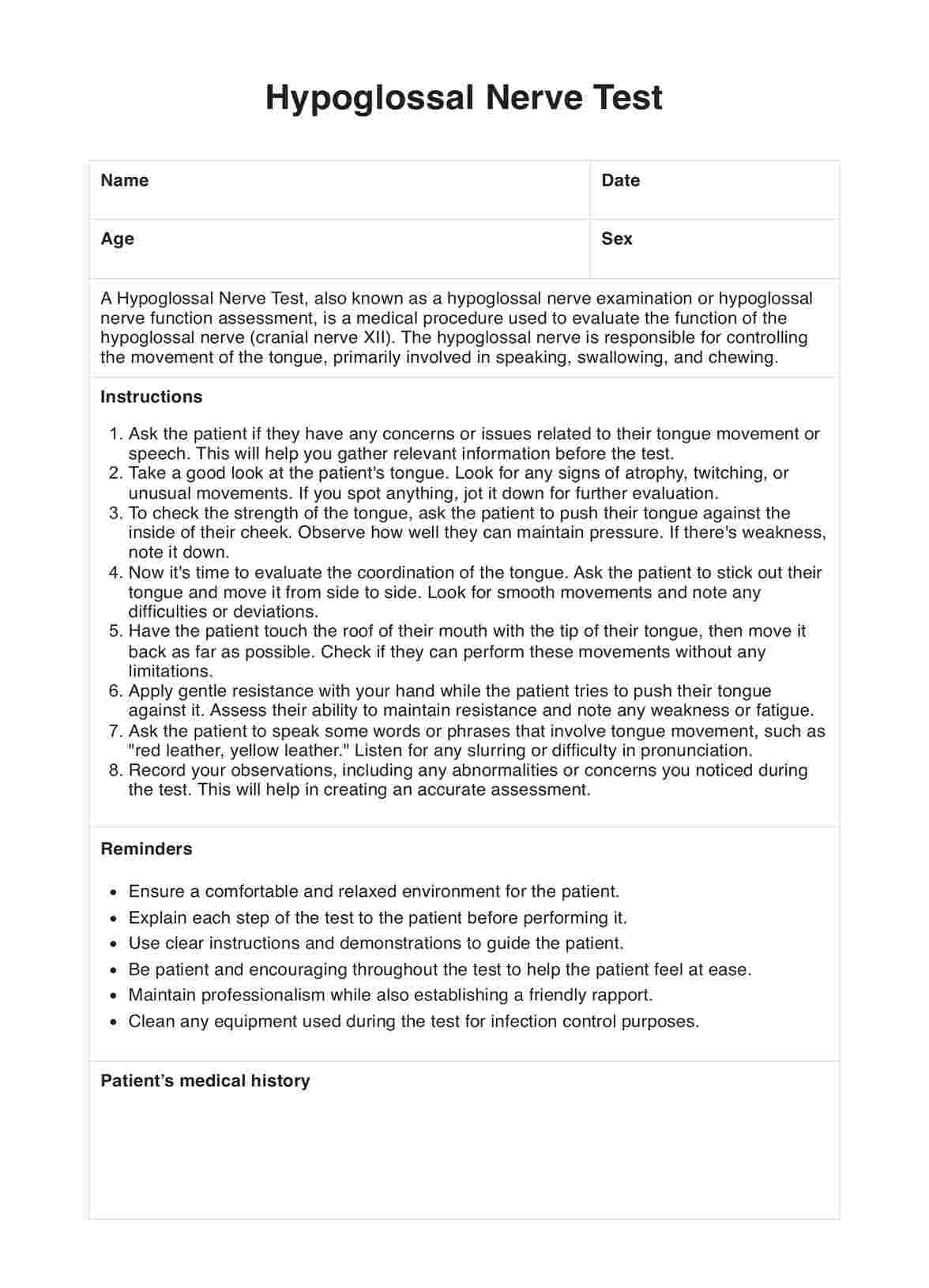The Hypoglossal Nerve Test is typically used by medical professionals such as neurologists, doctors, and nurses who need to assess a patient's hypoglossal nerve function. The test can also be used to diagnose certain conditions such as stroke, spinal cord injury, and cervical myelopathy.

Hypoglossal Nerve Test
Get access to a free Hypoglossal Nerve Test PDF and example. Learn how this assessment can help diagnose potential nerve problems.
Use Template
Hypoglossal Nerve Test Template
Commonly asked questions
You can conduct a Hypoglossal Nerve Test to assess a patient's nerve function. This is often done during neurology exams and as part of a medical evaluation.
Once a Hypoglossal Nerve Test is completed, storing the results safely and securely is important. This can range from a secure digital file to paper records in a filing cabinet. It is important to ensure that all relevant information is stored securely to be referenced in the future if needed.
EHR and practice management software
Get started for free
*No credit card required
Free
$0/usd
Unlimited clients
Telehealth
1GB of storage
Client portal text
Automated billing and online payments











